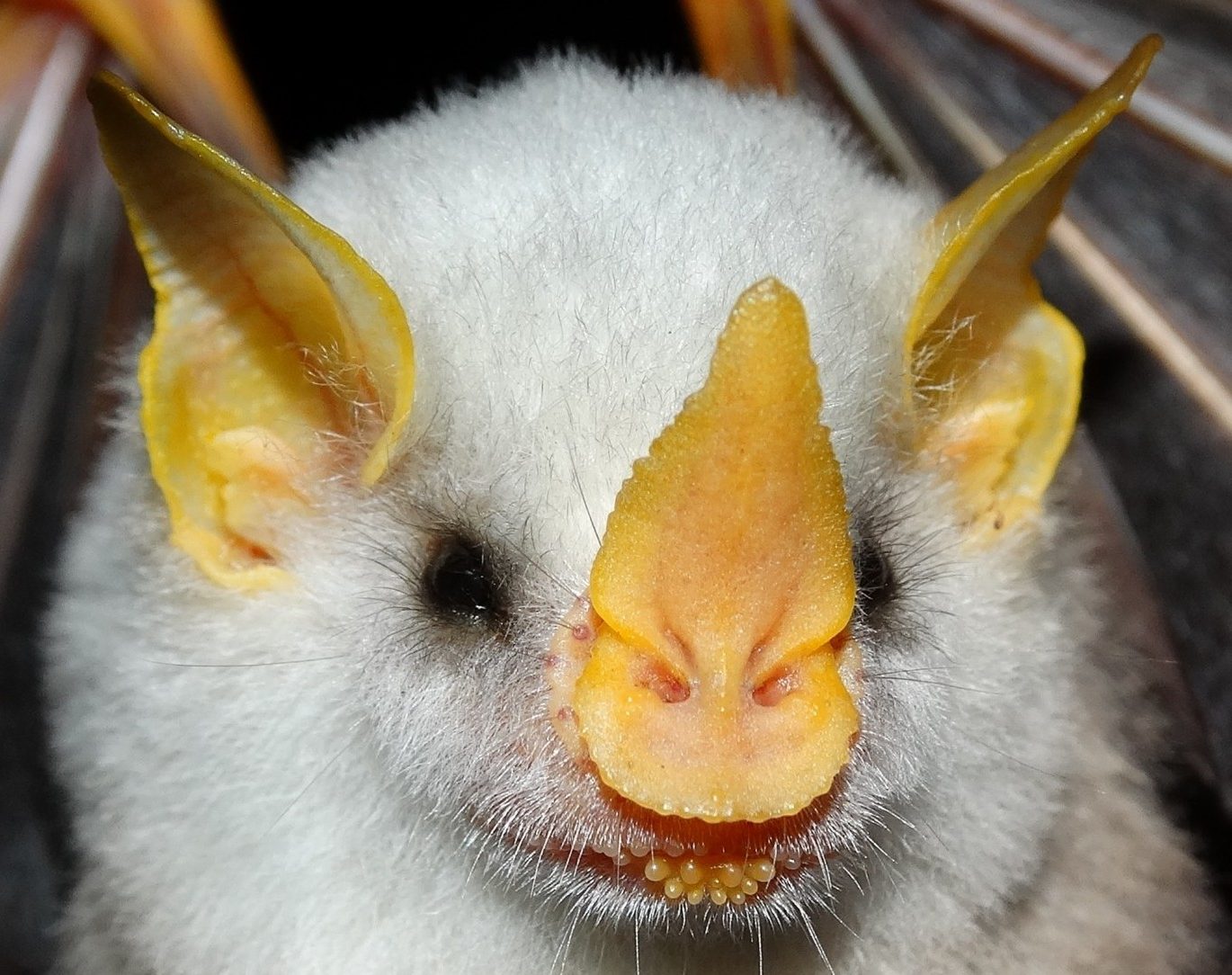After the Belize warm up, I went to Costa Rica to work at two main sites, the Tirimbina Forest Reserve and OTS La Selva research station. The major goal of this trip was to collect fecal samples for molecular dietary analyses in foliage-gleaning bats, along with performance data across bats and other mammals. These data will allow us to understand patterns and mechanisms of food resource partitioning within and across dietary guilds. With the help of collaborator Dr. Bernal Rodríguez Herrera and his students at the Universidad de Costa Rica, we were able to collect data for a total of 24 species of bats, plus several kinkajous.
One of the trip highlights included catching Honduran white bats (Ectophylla alba), a very small frugivore that builds tents in the vegetation. Findings about Ectophylla’s tent construction behavior have changed the paradigm that only male bats build these roosts as part of a resource-defense polygynous system; female Ectophylla also contribute to building tents. A second high point was collecting a wrinkle-faced bat (Centurio senex), a very rare and morphologically derived stenodermatine that is built to bite. Just as impressive, the second largest bat in the Neotropics (Phyllostomus hastatus) made its appearance in our nets and contributed to our dataset. With such stunning biodiversity, we are very much looking forward to continue work and collaborations in Costa Rica. Pura vida!
[Best_Wordpress_Gallery id=”2″ gal_title=”Costa Rica 2013″]


Comments are closed